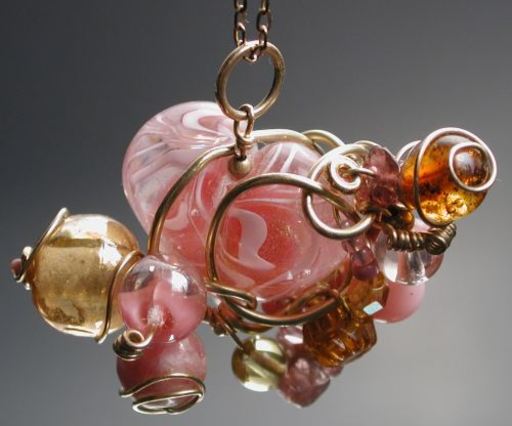I reasoned the wirework would support the cracks, and be a great way to salvage a beautiful bead. I should note, these are not my beautiful beads, but those of my teacher, Peggy Prielozny, who was extremely dubious about my theory, but kind enough to give me cracked beads anyway.

She proved to be correct...the other blue and green heart did indeed crack into two; but I love the wirewrapping and will probably simply glue the pieces together. As I'm a self taught wirewrapper—in fact, I called these ‘beaded beads’ for many years, and didn't really associate the technique with traditional wirewrapping at all—I have some rather idiosyncratic approaches. One is the way I finish ends. Instead of tucking them tidily underneath somewhere, I tend to come out the top of a bead and either coil the excess using the tips of my pliers or spiral around the bead, wrapping the end around itself. I also use a great many more beads than most traditional wirewrapping calls for.

I'm very proud of these pictures as I've never successfully shot hanging objects on my own before. —Since they inevitably sway, one really needs flash to freeze that motion. I don't have strobes, relying strictly upon photofloods, which means when shooting transparencies, I'm generally shooting in the 1/8 to 1/30 sec. range. The digital camera, in this case, was able to shoot these as fast as 1/125, which proved to be fast enough.
Austrian crystal, czech fire polish, indian mandrel wound, amber, tourmaline, garnet, rose quartz, rhodochrosite, gold fill wire all around one of Peggy's dichro core filligrana lampworked hearts. Mid 90s? Collection of the artist.
Unless otherwise noted, text, image and objects depicted therein copyright 1996--present sylvus tarn.
Sylvus Tarn